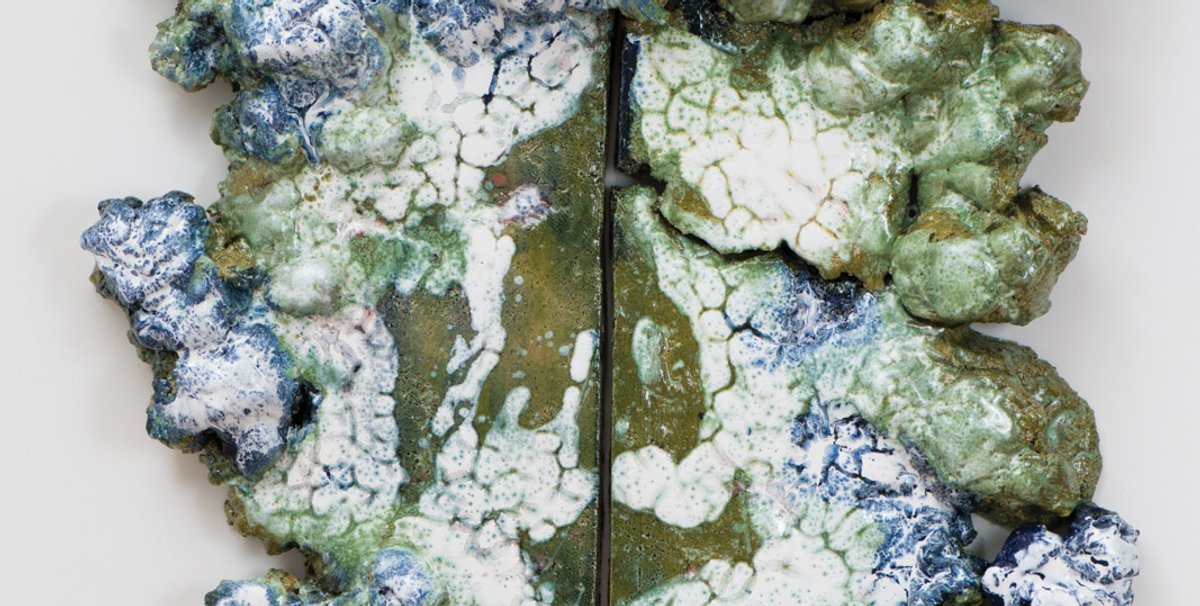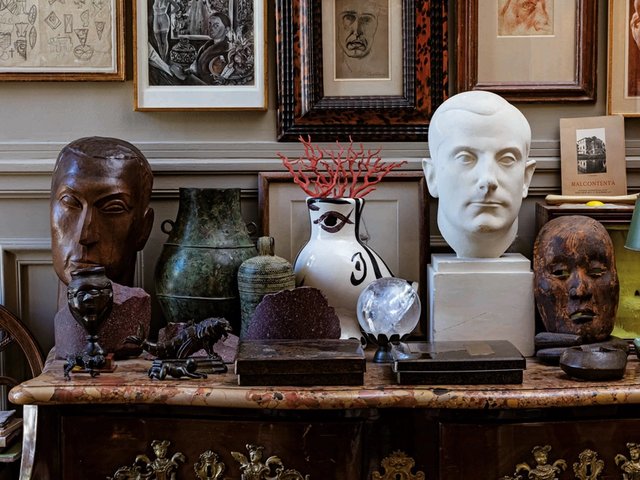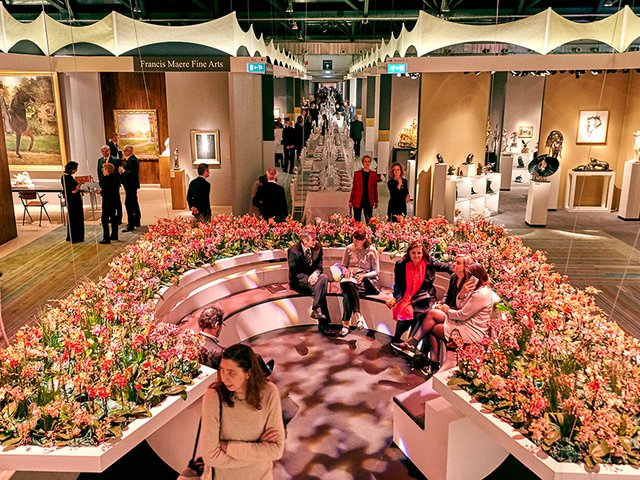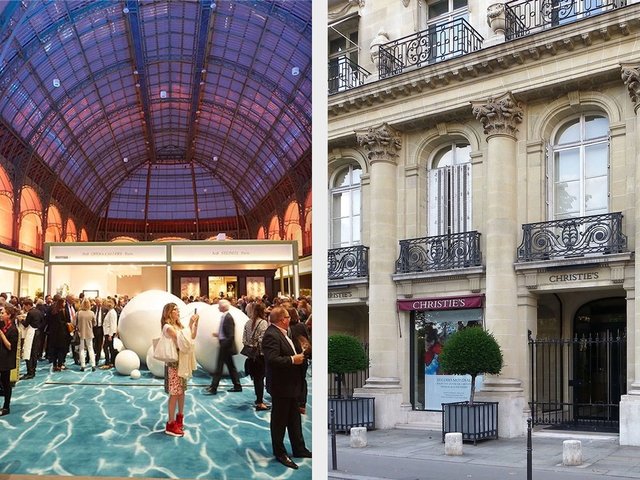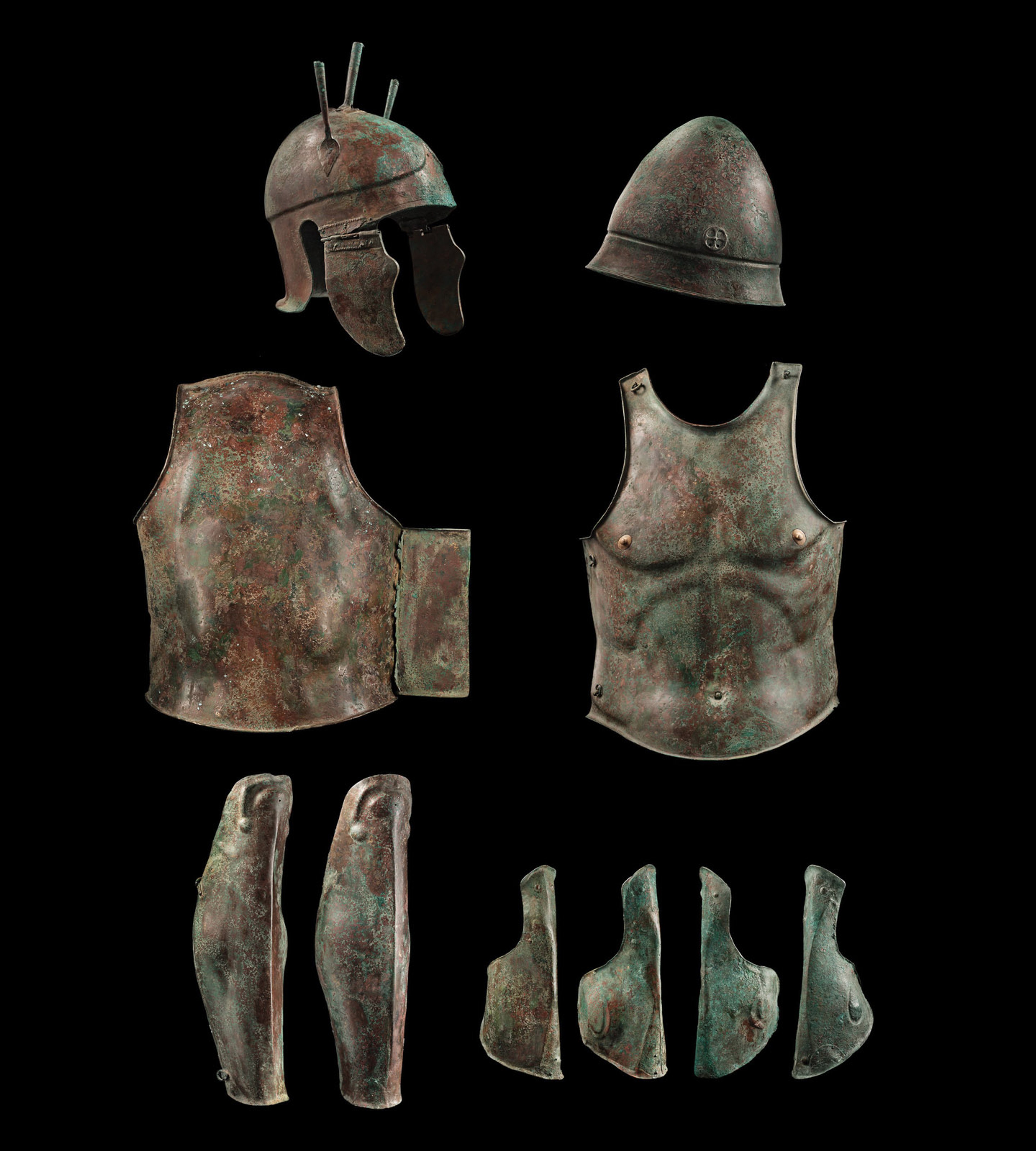
Greek armour (fourth century BC), Kallos Gallery. Surviving bronzes from Greece’s classical period are rare, with our knowledge of ancient Greek bronze sculpture based almost exclusively on Roman marble copies. Consequently, functional items from lower down the scale of aesthetic value, such as this fourth-century BC cavalry armour—helmet, cuirass and greaves, all highly decorated—are extraordinary survivals. As combat in ancient Greece was mainly hand to hand, armour was usually light and allowed for free movement of the arms, as can be seen in this example. Many pieces of armour are extant, but a whole suit is unusual and helps better to understand the nature of ancient Greek warfare. Price undisclosed. Courtesy of Kallos Gallery
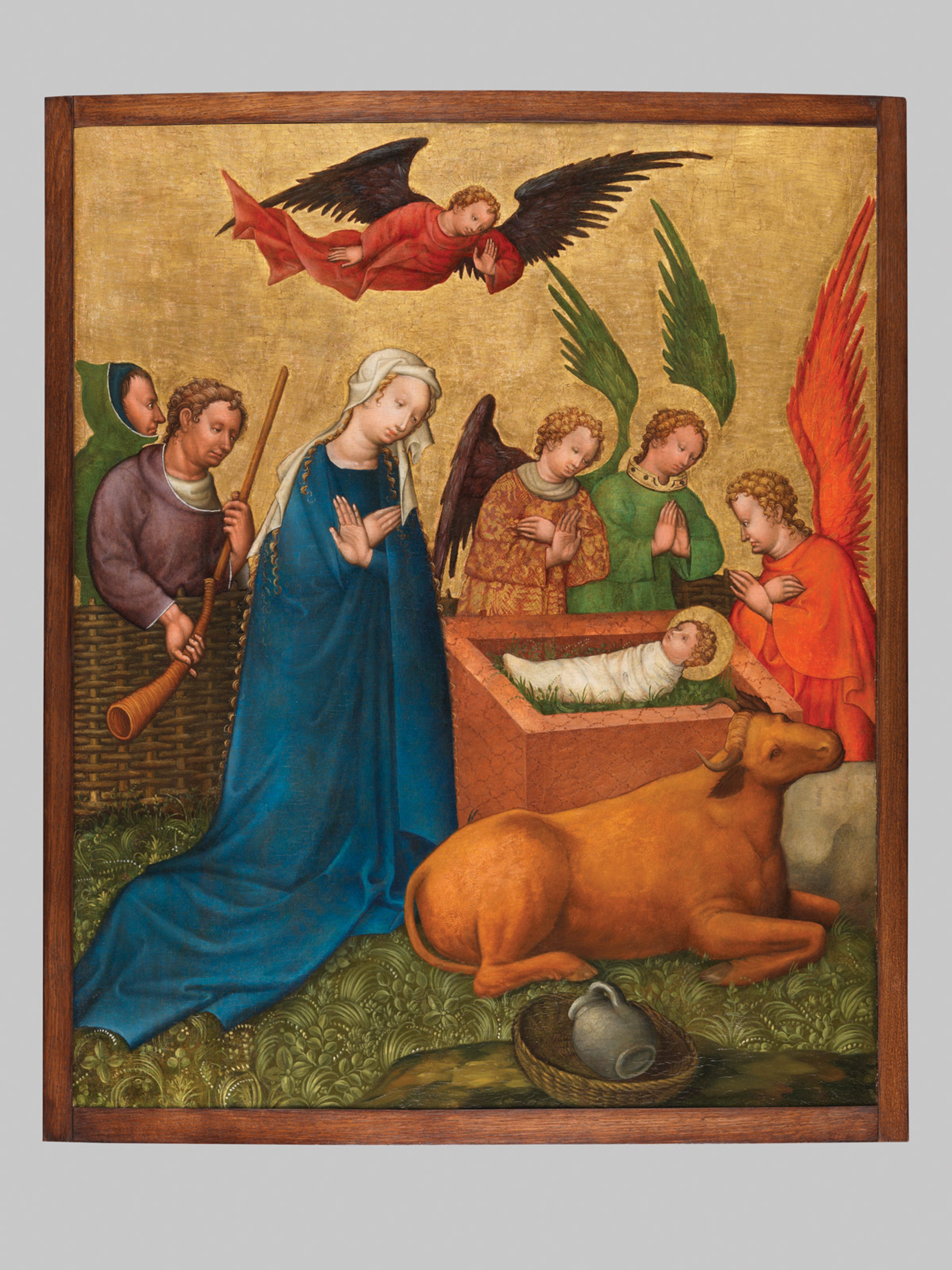
Master of the St Lambrecht Votive Panel, Nativity (around 1430), Sam Fogg. This jewel of a nativity, in oil and gold on panel with a depiction of Christ in the Garden of Gethsemane on the reverse, is by the 15th-century Austrian artist known as the Master of the St Lambrecht Votive Panel. It was probably painted in Vienna and is a prime example of the International Gothic style in Austria. Unusually, Joseph is absent from the scene. According to Matthew Reeves, a specialist at Sam Fogg, the panel, originally part of a larger altarpiece, had been in a private German collection since at least 1938. “The artist is known for a large commemorative panel painting called the Lambrecht Votive Panel, but few other works by him survive,” Reeves says. Price undisclosed. Courtesy of Sam Fogg
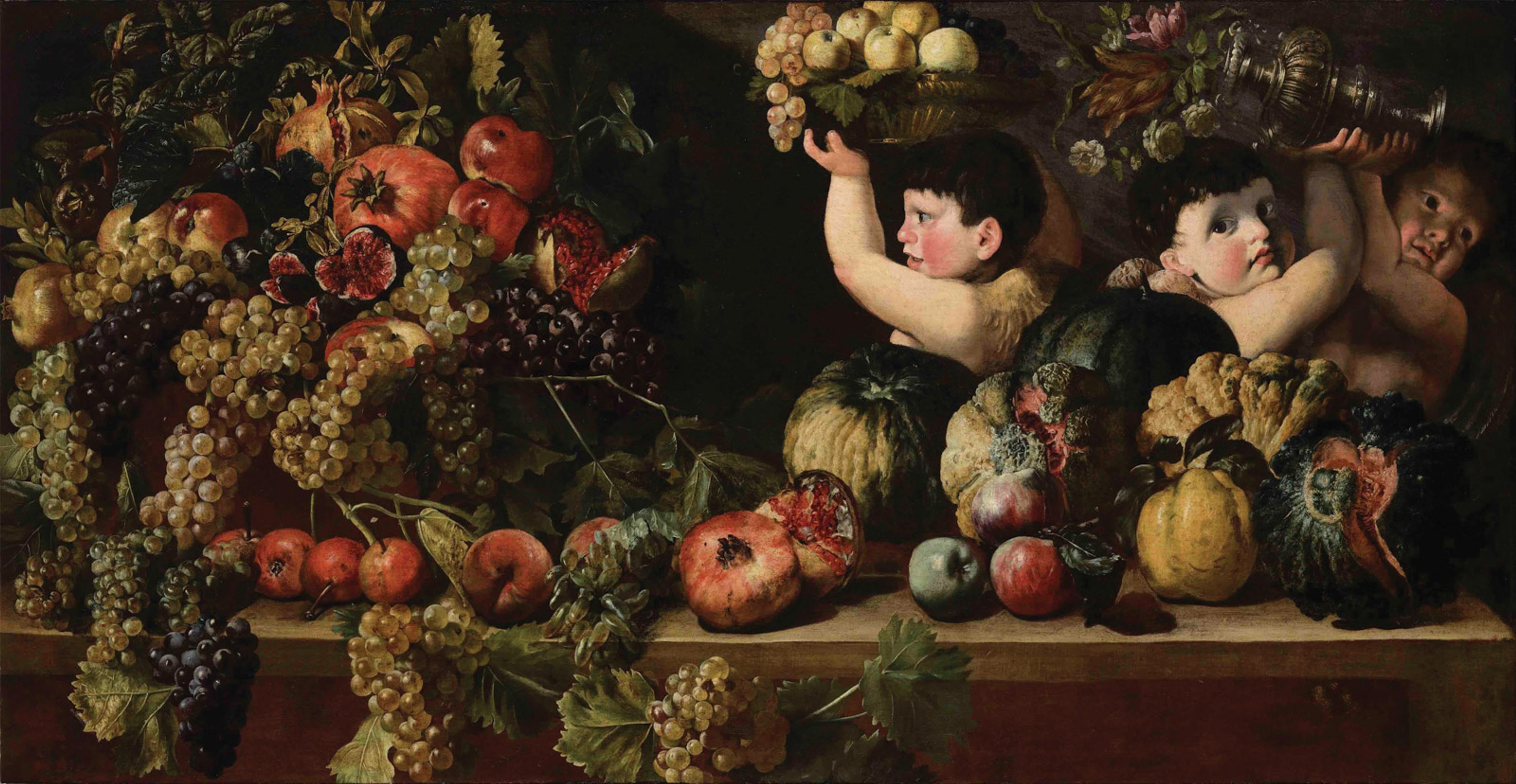
Bartolomeo Cavarozzi, Still Life of Fruit with Three Figures of Children (early 17th century), Robilant and Voena. This sumptuous banquet scene with three cheeky cherubs was described simply as ”17th-century Italian School” when Robilant and Voena bought it from a private Italian collection. The gallery has since attributed it to the Italian artist Bartolomeo Cavarozzi, a follower of Caravaggio, after finding similarities between it and one of his still lifes owned by the Acquavella Galleries, New York, in the 1970s. Possibly commissioned as a decorative overdoor painting for a palace, the work is believed to have been part of a series depicting the seasons, with the grapes, figs and pomegranates representing autumn, and the three putti standing for the months of October, November and December. Around €1m Courtesy of Robilant and Voena
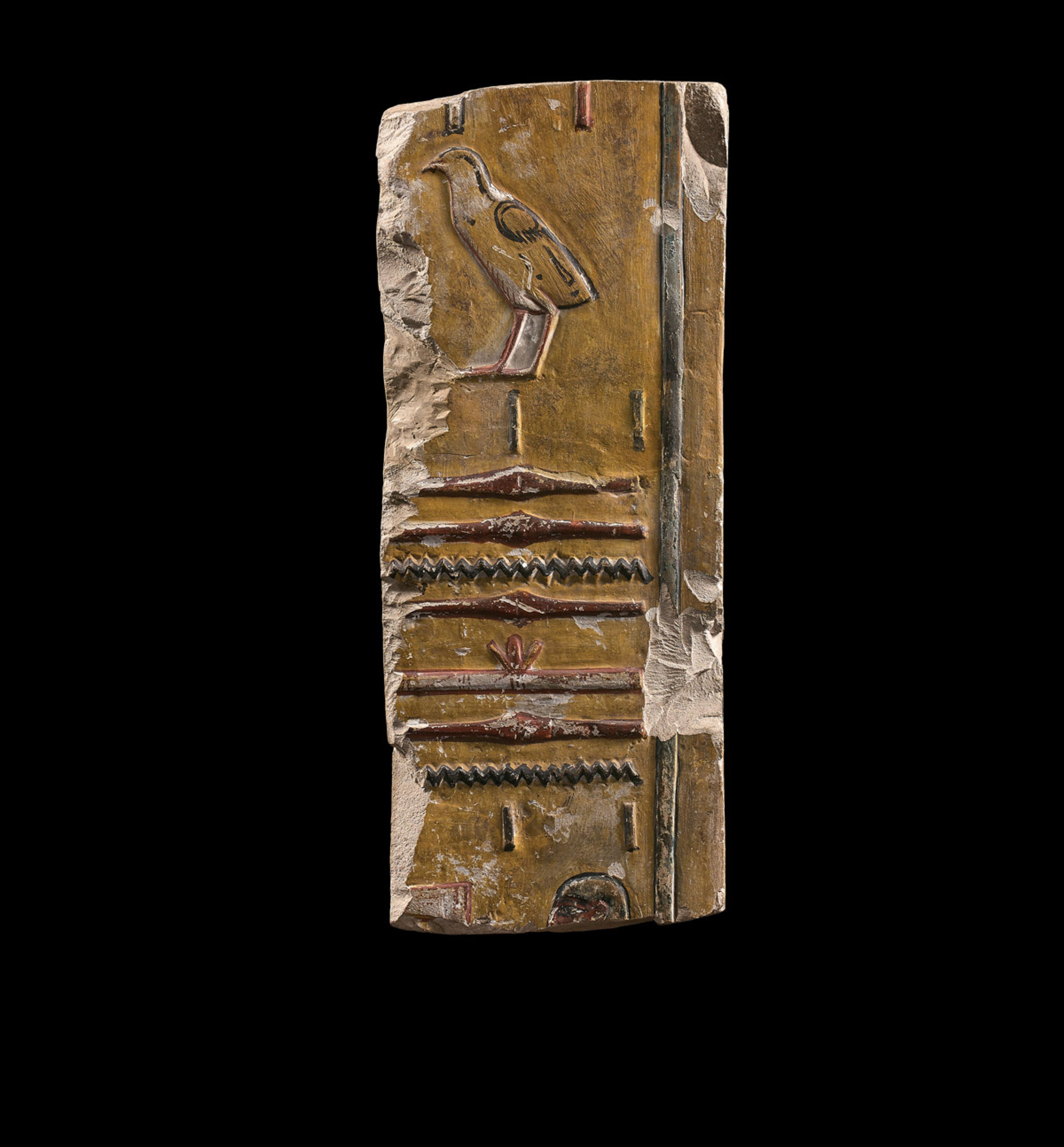
Pharaoh Seti I tomb fragment (around 1300BC), Galerie Eberwein. Much like the King of Rock and Roll, Pharaoh Seti I was buried a stone’s throw from Memphis, although in the pharaoh’s case the one on the Nile, not in Mississippi. Seti I’s tomb is considered the finest in the Valley of the Kings and was discovered in 1817 by the Italian explorer Giovanni Battista Belzoni, who shipped sections of it to museums in Europe. Belzoni documented parts of the tomb, as did the British photographer Harry Burton a century later, but some sections were not covered and this bas-relief fragment is probably from one of them, according to the gallery director Antonia Eberwein and the Egyptologist Florence Barberio. The fragment, part of a funerary bas-relief, shows an excerpt from the funerary text The Book of Gates, according to Barberio, which allowed her to identify its original location in the tomb. Eberwein has since lent the fragment for scanning and it has been added to the digital record of the tomb. €70,000. © B-Objects_Sculpture
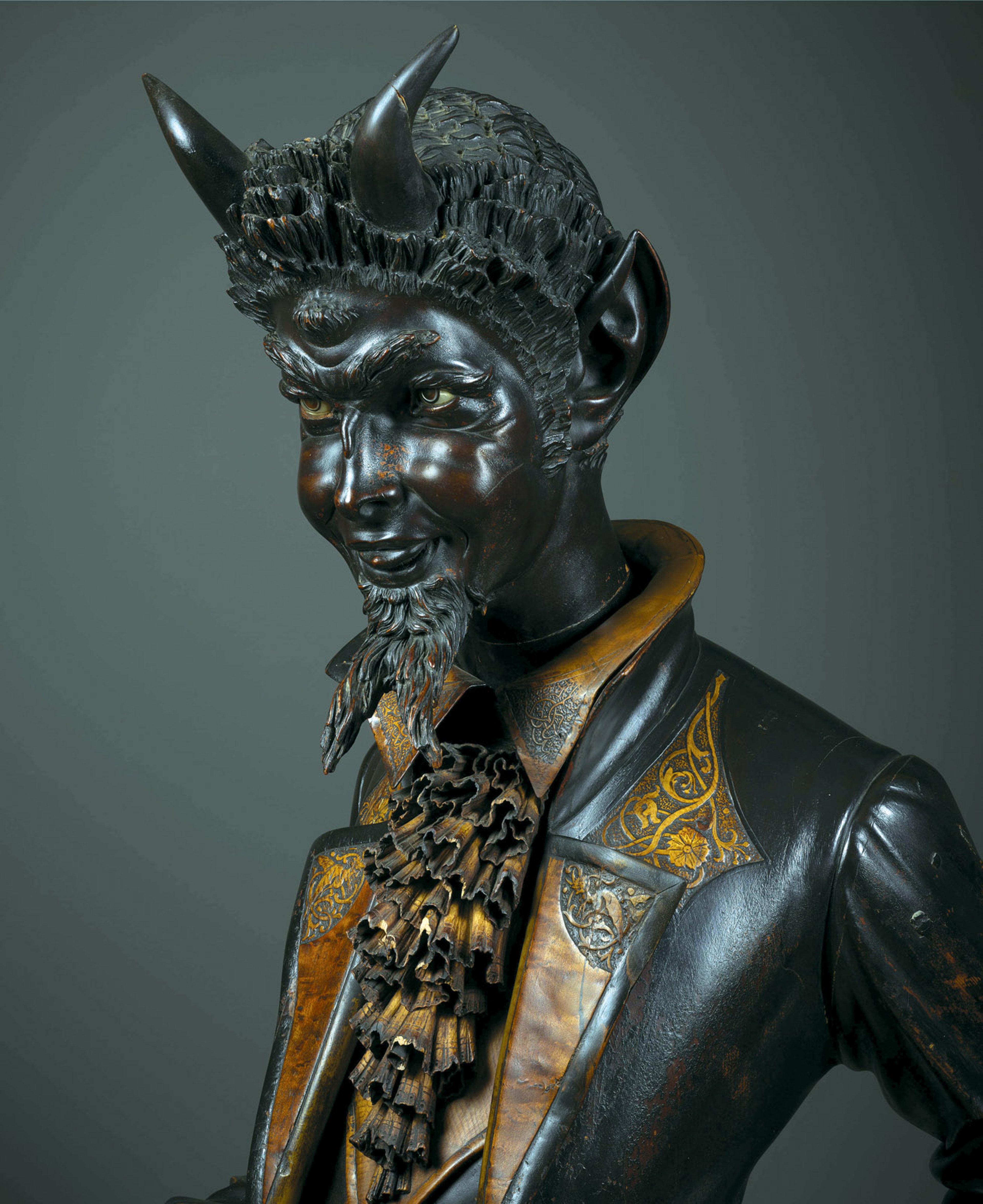
Francesco Toso, Faun and Faunness (around 1880s), Daniel Katz Gallery, This pair of bizarre figures—one of which is shown here—once welcomed visitors to the home of the eccentric interwar fashion designer Elsa Schiaparelli, famed for her use of lurid “Schiaparelli pink” and her signature perfume, Shocking de Schiaparelli. Her guests would have been in for a shock, passing these two life-sized fauns, made from lacquered carved fruitwood in the late 19th century by the Venetian sculptor Francesco Toso. Schiaparelli referred to them as “Mr and Mrs Satan”, according to the gallery director Tom Davies, and it was said that if you wanted to return to the designer’s home “you crossed their palms with silver”. The pair sold at Christie’s Paris in January 2014 for €20,000, at which time they were attributed to the Northern European School, and then for €181,250 (with fees) in December 2018. Big palms would have been needed for all that silver. €385,000. Courtesy of Daniel Katz Gallery
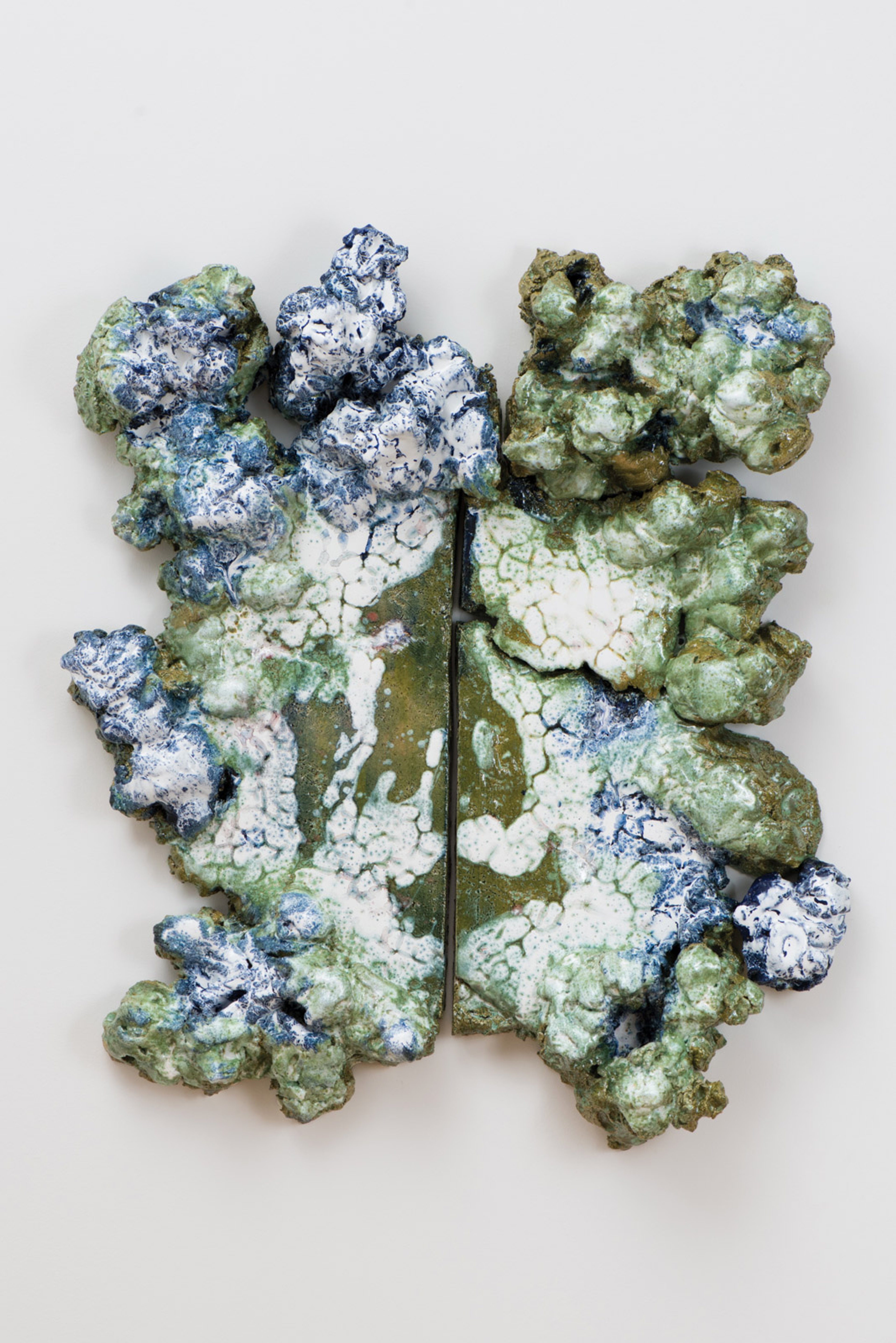
Rosemarie Trockel, Marry Mood (2016), Sprüth Magers. For the gallery’s debut at Tefaf Maastricht, Sprüth Magers has worked with the German conceptual artist Rosemarie Trockel to produce a “unique booth concept”. The floor and walls will be coloured in a “sand stone hue to create an environment for her works”, a gallery spokesman says. The artist, who is known for working in a variety of media including bronze, paint, wool and found objects, has concentrated on her ceramic works for Tefaf, selecting from her wall pieces and sculptures, which will be installed on lime sandstone spolia from the 19th century. Among them is Marry Mood, shown here, a glazed ceramic piece that measures a metre high. Price on request. ©Margherita Borsano
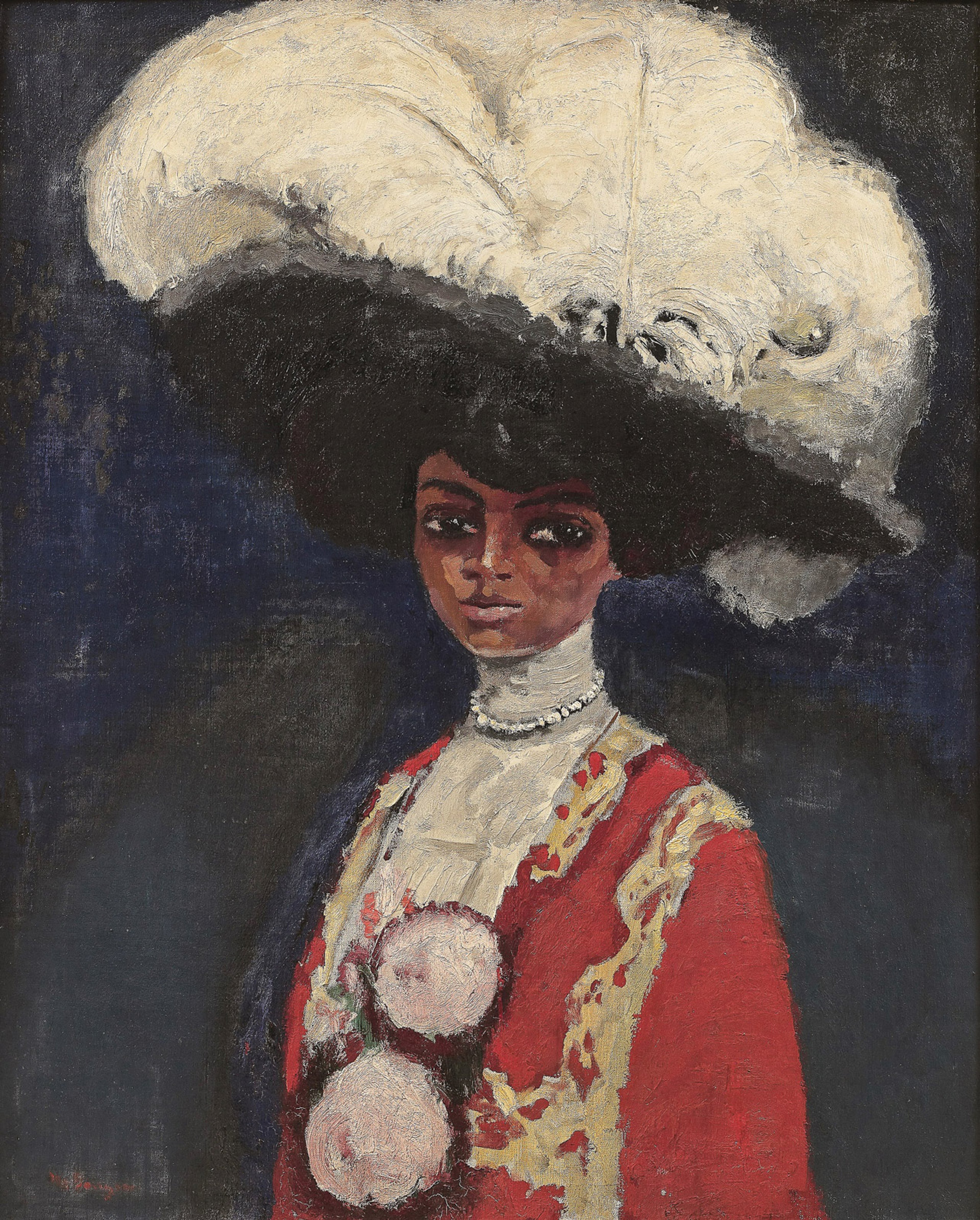
Kees van Dongen, La plume blanche (around 1910-12), Dickinson. This signed oil on canvas was made around the time that Kees van Dongen (1877-1968), a Paris-based Dutch artist, shifted to painting women in the city’s fashionable society circles. Van Dongen’s had previously been drawn to Paris’s demi-mondaines, depicted in his earlier nightlife scenes of dancers, singers, masquerades and theatre. It is “an important society portrait”, according to James Roundell of Dickinson, the London-based fine art dealer. The elaborate dress of the anonymous sitter in this impasto work encapsulates “the lively atmosphere of Belle Époque Paris”, Roundell says. While most of the women Van Dongen portrayed are pale skinned, in this work it appears the woman may be of African heritage. La plume blanche (The white feather) has been in private hands for over a century. Price undisclosed. Courtesy of Dickinson
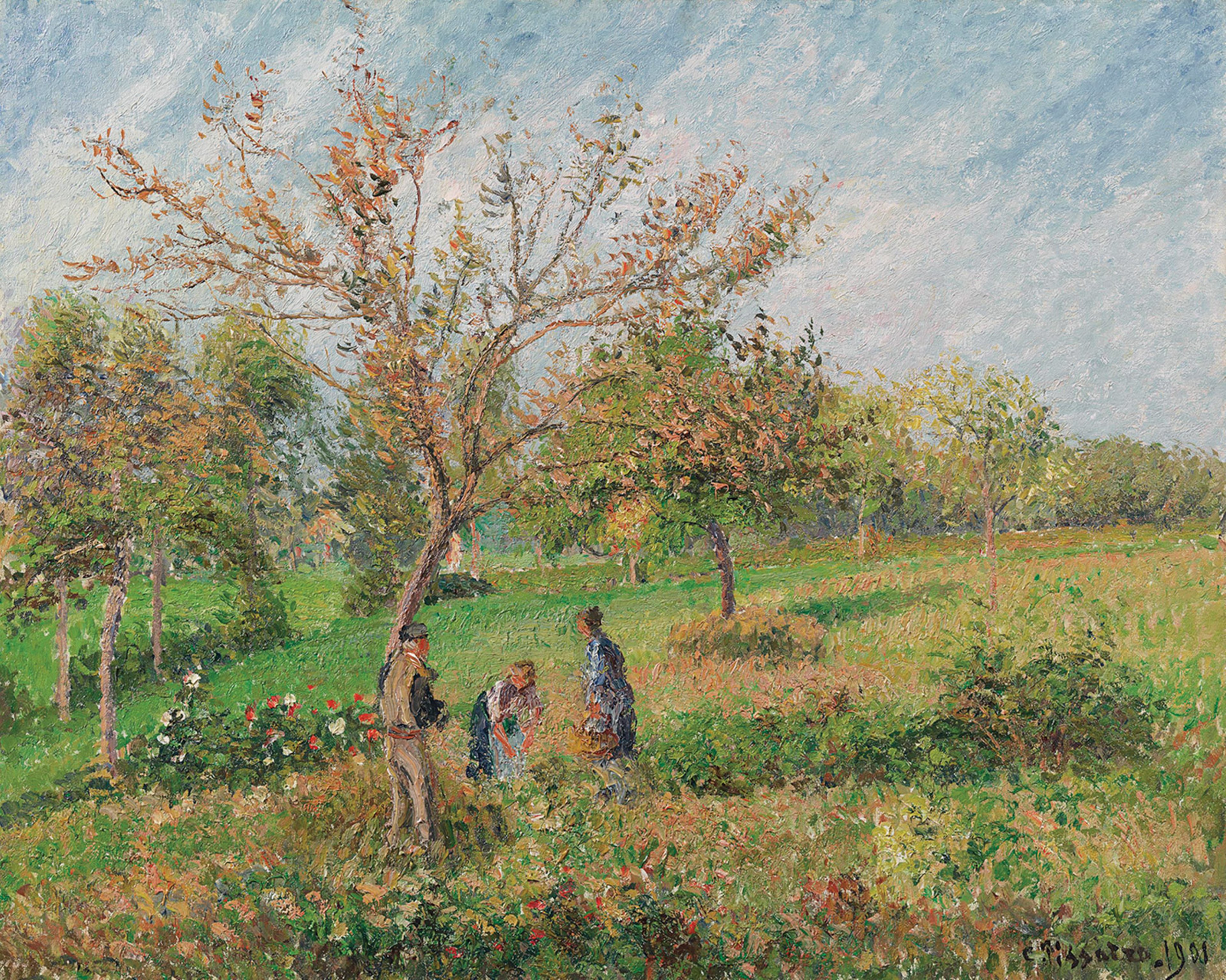
Camille Pissarro, Dans le pré en automne à Éragny (1901), Richard Green Fine Paintings. The trees in this lively late work “are decked with dead leaves which burst on the eye in the sunlight like bunches of flowers”, Pissarro wrote to the dealer Bernheim-Jeune, who bought the piece from him. The signed and dated oil on canvas painting depicts the autumn meadows at Éragny, a commune 50 miles north-west of Paris where Pissarro was based from 1884 until his death in 1903. It was a landscape much loved by the artist and one he captured in around 200 works, says Tamara Green of Richard Green Fine Paintings. “This painting brings out all the colours and life of autumn and reflects Pissarro’s emotional engagement with nature,” she says. The painting, from a private European collection, is part of a small display presented by the London-based gallery at Tefaf, titled Father and Son: Camille and Lucien Pissarro. Around £3m. © Richard Green
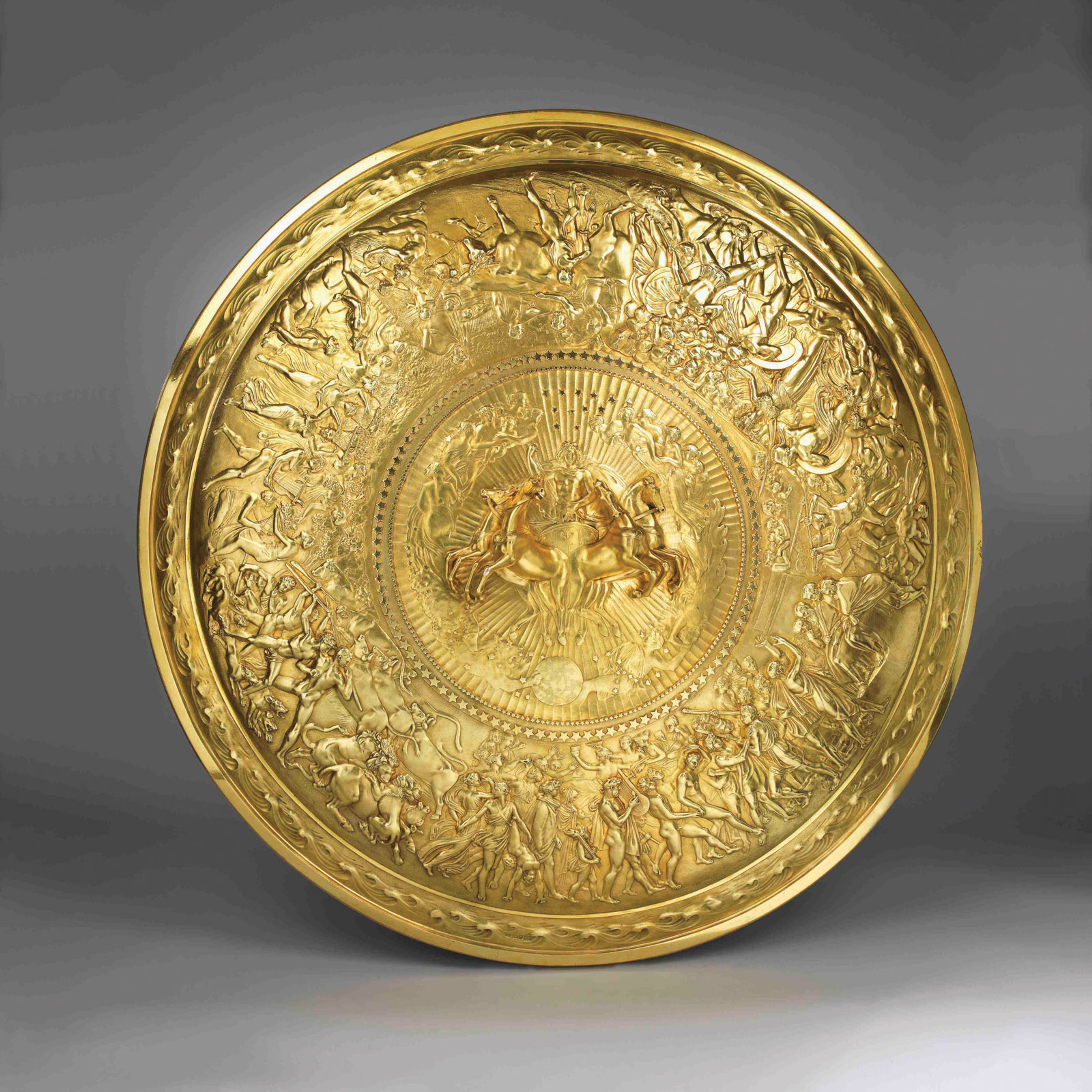
Philip Rundell, Shield of Achilles (1823-24), Koopman Rare Art. This silver-gilt and chased piece, made by the English silversmith Philip Rundell after a design by the sculptor John Flaxman, is a fine example of early 19th-century silver. Flaxman closely followed Homer’s description of the hero’s shield in the Iliad (his drawings are in the British Museum and the original cast is in Sir John Soane’s Museum, London). It is one of five silver-gilt shields made by Rundell (none of them to commission) and was sold to Ernest Augustus, Duke of Cumberland and, from 1837, King of Hanover. The king probably bought this example after his creation of the Order of St George in 1839, as the incorporation of his arms shows. £5m. © NMPL
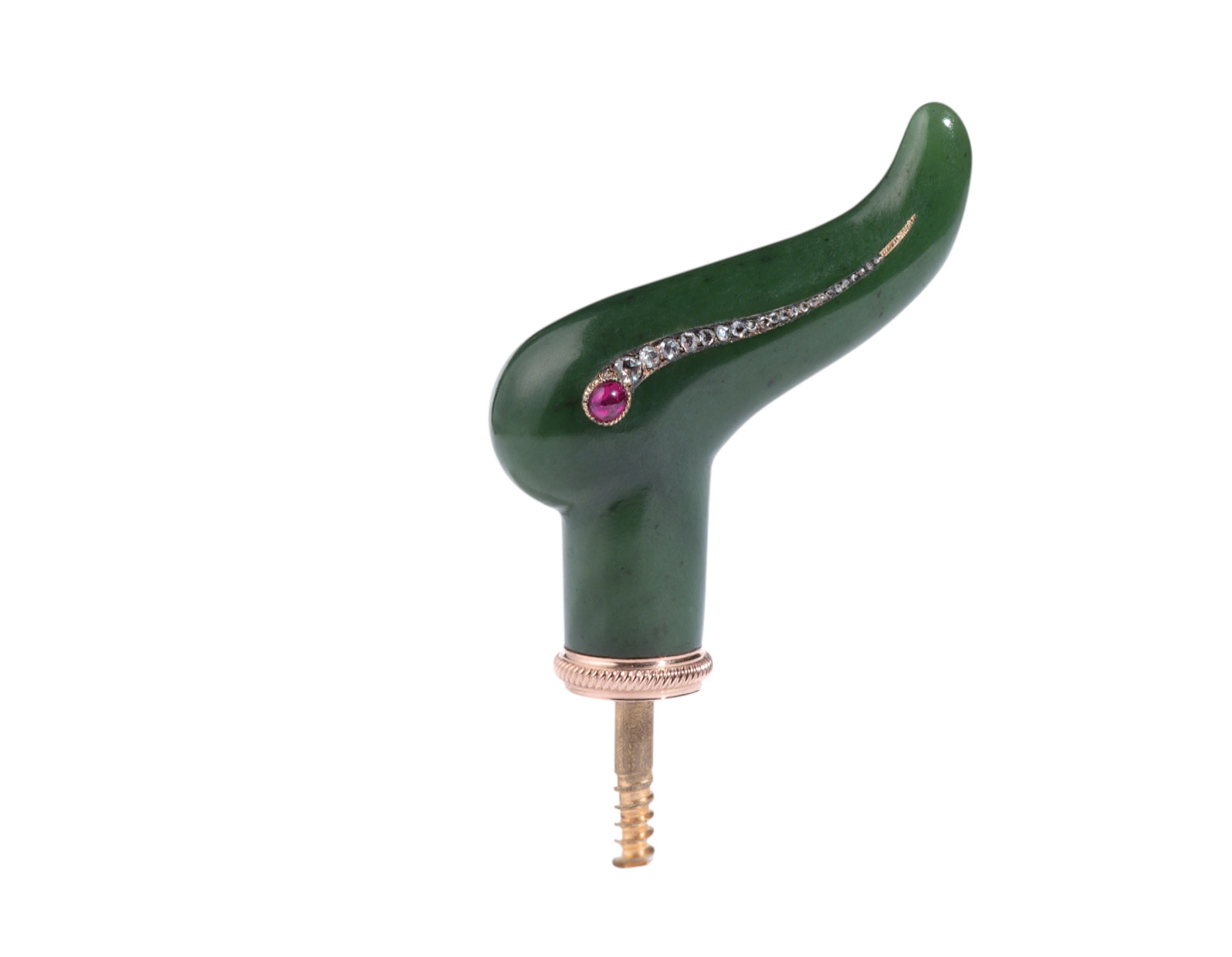
Carl Fabergé duck-shaped handle (around 1908), Wartski. At the turn of the 19th century, Fabergé created decorative cane and parasol handles, often set with gemstones. Carved from nephrite, this cane handle has been crafted into the form of a duck’s head, with cabochon ruby eyes and an upturned beak set on either side with rose-cut diamonds. It was made in St Petersburg by the craftsman Henrik Wigström and comes in its original fitted case. Price undisclosed. Courtesy of Wartski
Greek armour (fourth century BC), Kallos Gallery. Surviving bronzes from Greece’s classical period are rare, with our knowledge of ancient Greek bronze sculpture based almost exclusively on Roman marble copies. Consequently, functional items from lower down the scale of aesthetic value, such as this fourth-century BC cavalry armour—helmet, cuirass and greaves, all highly decorated—are extraordinary survivals. As combat in ancient Greece was mainly hand to hand, armour was usually light and allowed for free movement of the arms, as can be seen in this example. Many pieces of armour are extant, but a whole suit is unusual and helps better to understand the nature of ancient Greek warfare. Price undisclosed. Courtesy of Kallos Gallery
Tefaf Maastricht wish list: from a £3m Pissarro landscape to ancient Greek armour
As the VIP preview of the Dutch fair opens, we select objects to suit every taste from the Classical to contemporary
